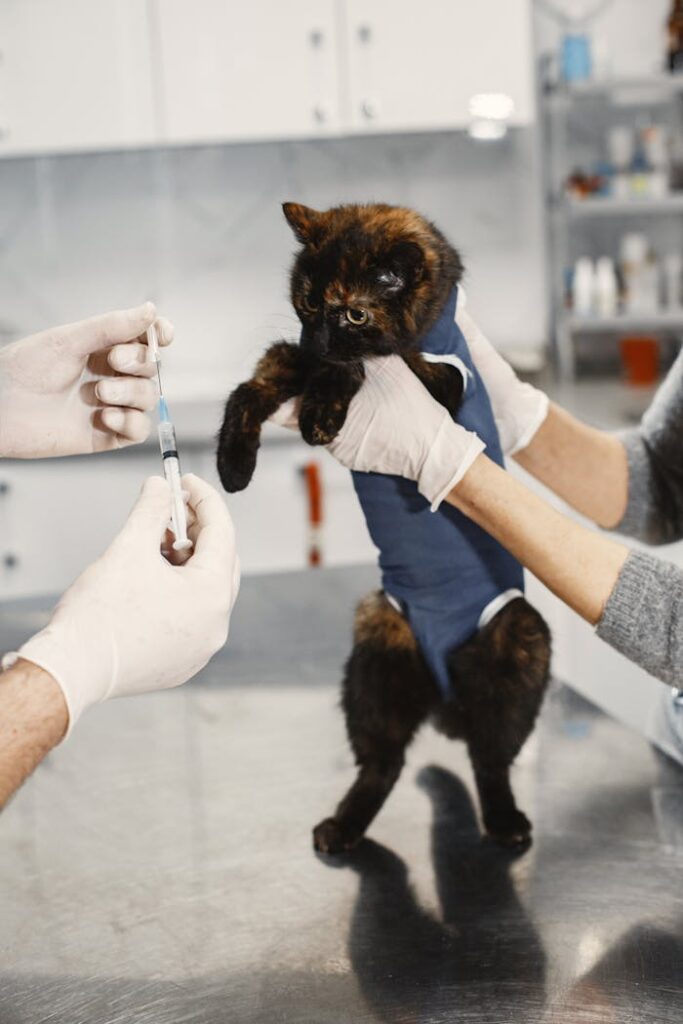For expats moving to Mexico with pets, there is a steep learning curve.
If you haven’t read my previous post on how to move your pets to Mexico in 2024, I recommend that you start there.
In this post you’ll learn about living with pets in Mexico, including:
- Buying pet food & supplies
- Finding veterinary care
- Vet care costs
- Traveling with pets
- Getting safe and reliable pet-sitters
- Taking dogs to public places (Guadalajara focus)
- Dog Parks (Guadalajara focus)
Buying Healthy Pet Food in Mexico
If you’re a regular reader of this blog, you already know that pet food and supplies are taxed as luxury items, following a controversial decision by former President Enrique Peña Nieto back in 2013.
This means your dog or cat kibble gets hit with a 16% luxury tax (“impuesto especial de productos y servicios” or IEPS) on top of the regular 16% value-added tax. These taxes get applied at the retail level, and there is no difference for shopping in physical stores or online.
To illustrate, one can of Fancy Feast cat food costs $30 pesos ($1.75 USD) at Petco Mexico, while a 12 lb. bag of Blue Buffalo cat kibble costs $1,526 on Amazon Mexico ($89 USD). Both items cost roughly double what the same item costs in the U.S. if purchased through the same retailer.

In my experience, there is rarely if ever any savings from shopping online versus in stores for pet food in Mexico. Premium pricing is the rule.
For dogs, a 14 lb. bag of Royal Canin small dog kibble regularly costs $1,495 pesos (~ $87 USD) on Amazon Mexico. To balance the high cost of quality pet food we now supplement our dog’s diet with fresh, human-grade meat, rice and vegetables as it’s far less expensive, and healthier too.
And while it’s possible to find much lower priced pet kibble in tianguis (open air markets) around Mexico, you will not find information available on the ingredients. Furthermore, regulations on pet food in Mexico are more lax relative than in the U.S. (with false claims on ingredients a problem), so you are taking a big gamble with your pets’ health if you decide to go that route.
We were fortunate that a friend of ours who rescues dogs and cats here in Mexico steered us away from a popular local cat kibble advertised as grain-free, because vets see a lot of kidney issues with cats fed this particular brand.
If you have concerns, it’s best to ask a veterinarian which brands they recommend for your cat or dog before shopping here in Mexico.
Besides the high cost of pet food, pet accessories like leashes, collars, and harnesses can also be expensive. And importing these things directly from abroad is no solution as you’ll get hit by a 19% import tax and 10% duty if you go this route.
One hack I’ve found for the high cost of pet food and supplies, i.e. the luxury tax problem, is shopping at vet clinics.
Veterinarians often sell pet food and supplies to supplement their income, and aren’t subject to luxury tax the same way that retail outlets are. So they can offer better prices on these items than you normally find at Petco, Amazon or other pet boutiques around town.

And while vets carry more limited supplies and a narrower range of brands, you can count on these products being of good quality.
From my perspective, because shopping at vets for your pet food needs flies in the face of conventional wisdom from life in the U.S., it may be something you need to continually remind yourself to do.
Finding Vet Care in Mexico
Veterinarians are plentiful and remarkably affordable throughout Mexico, most notably in medium to large cities where there is more wealth and significant pet ownership.
In fact, they can be so plentiful in some areas that it can be a bit overwhelming trying to decide which one to visit. For this important question, I recommend asking other responsible pet owners you meet (expats or locals) for their recommendations.
If you haven’t yet made those connections, then I suggest visiting an expat forum or animal rescue group page on social media and asking the question there, to leverage the wisdom of the crowd.
Additionally, because dog ownership is so much more common in Mexico than cat ownership (some data I’ve seen shows it at 4:1 in favor of dogs), you should try to get local recommendations from pet owners who have the same species of pet as you.
Here in Guadalajara you can count the cats-only clinics on one hand, with most vets having vastly greater knowledge of, and experience with, treating dogs.
Besides standard vet clinics, we’ve also been pleasantly surprised to find vets in Guadalajara who make house calls. While it may not be a big deal for dogs, we’re thrilled to skip the stress of putting our cats into carriers and taking them to the vet by car for their routine care.
The last time we had a house call to vaccinate both of our cats, the vet visit (she brought a vet tech with her as well) and four shots cost us less than $150 USD.
And as any expat living in Mexico without a car will tell you, vets who make house calls are a wonderful, valuable resource.
How Much Does a Vet Cost in Mexico?
Veterinary care in Mexico is so affordable compared to the U.S. that the first few times you take your animals to the vet, it’s sure to put a smile on your face.

To share an example, our cat Nico suffered a serious health scare in early January of this year. He required an emergency procedure to remove a urinary blockage, six days of hospitalization, multiple tests, blood work, medication, special diet, and round-the-clock attention.
The total bill for Nico’s care was the equivalent of $600 USD. Back in Denver, we would’ve been looking at a bill of about $5,000 for emergency vet care like this.
Because care is so affordable in Mexico, everyone pays out of pocket and “pet insurance” to help owners defray costs isn’t a thing. It does help to take the sting out of the much higher pet food/supply costs described above.
In recognition of the extreme cost differential, Mexico has been gaining a reputation as a destination for pet vet tourism in recent years, much like it has for medical tourism.
Finding Pet-Friendly Hotels and Homes in Mexico
We Airbnb’d in Mexico for approximately six months back in 2022. Based on our experience I’d estimate that no more than 10% of short-term rental properties through the platform allow pets.
Fortunately, the Airbnb site search now makes filtering on pet-friendly accommodations straightforward. (this wasn’t always the case, at least in Mexico)
Given the shortfall of pet-friendly inventory, I recommend booking early to avoid having to stay in undesirable locations or unpleasant houses. You may also have to pay a bit more per night than is typical in your location, for this relatively uncommon privilege.
The situation is sadly not much different for hotels. In our experience, not only were pet-friendly hotels difficult to find when we were relocating and traveling by car from Texas to Guadalajara, several hotels that advertised themselves as “pet friendly” were in reality only dog friendly. They had policies against cat guests, severely limiting our options while on the road.

Additionally, in virtually all cases travelers will be required to pay pet fees on top of the room rate. These fees are typically assessed upon arrival, and can carry surprises as they are seldom disclosed fully on booking websites.
In my experience, some pet-friendly properties charge by the room and others by the pet, so if traveling with multiple pets the expense can be significantly more than what you’d expected. My advice is to contact the hotel directly, in advance, about their pet fees to avoid unpleasant surprises.
Our Picks for Pet-Friendly Hotels in Mexico
Below is a list of hotels in Mexico that we’ve vetted and would recommend for their pet-friendly policies.
Guadalajara/Zapopan
Staybridge Suites: Several locations around town. We stayed on Av. Mexico, adjacent to the upscale Monraz neighborhood. Expect a modern, compact hotel room with kitchenette, free breakfast, and sub-par service at the front desk.)
Demetria Bungalows: Modern, high style (but dark) art deco apartments in a quiet spot in Colonia Americana. Some kitchenettes are undersized and ill-equipped. Don’t miss the wonderful café with street-side dining for breakfast.
Mexico City (CDMX)
Casa Mali by Dominion: Modern, mini-apartments with kitchenettes in Condesa across from Parque Mexico, where there is a brand new, enclosed dog park!
Condesa DF: Light-filled, chic hotel rooms in a French neoclassical building in the Roma neighborhood. The area is home to fabulous restaurants and shady, tree-lined streets. Parque España is only one block away and a perfect spot to take your dog for a walk.
Saltillo
Staybridge Suites: A sleek, new property with actual suites featuring small kitchens, free breakfast, and excellent service. Their spacious back patio is a great spot to catch up on work and enjoy their complimentary happy hour.
San Luis Potosi
Hilton San Luis Potosi: An elegant, hacienda-style hotel that recalls Mexico’s colonial heritage. Spacious rooms with easy access to an enclosed courtyard from main floor rooms is a great convenience for guests with dogs.
Fiesta Americana: A modern hotel tower connected to a shopping center. Exceptional service standards and on-site restaurant with breakfast buffet. Easy access to the enormous, dog-friendly Tangamanga Park is a bonus.
Finding Reliable Pet-Sitters in Mexico
Once you are more settled in Mexico, you’ll probably start dreaming about (and planning) weekend getaways to Pueblos Mágicos (gorgeous but lesser-known towns) and other fun destinations.
Expats without local family or close connections are confronted with the dilemma of finding safe and reliable pet sitters to care for their furballs when they set off on new adventures.
Long before we relocated to Mexico, our household typically turned to TrustedHousesitters to solve this problem. And nothing has changed since our move to Guadalajara.
TrustedHousesitters concept is simple. They connect pet parents who need a petsitter with budget-minded, animal-loving travelers, who get a free place to stay in exchange for taking care of animals (and basic home care like watering plants).
No money changes hands during housesits, so it’s a win-win for pet parents and travelers. We’ve been members of this community for over 10 years now.
As a nervous pet parent, I especially love that sitters from the U.S. complete background checks and submit references before they’re allowed to apply for sits. Prospective sitters also get reviewed by pet owners for past pet sits, with ratings in categories such as animal care, organization, communication, and cleanliness.
With this information, you’re able to make informed decisions about sitters you invite into your home. It’s a far cry from the social media groups for pet care in Mexico, where I regularly see sitters ghosting pet parents days before their trips, followed by a desperate scramble to find another sitter. Skip that hot mess!
Best of all, readers of this blog who use this link to join TrustedHousesitters and enter our exclusive LIVEWELL25 code get 25% off new memberships.
We’ve had the pleasure of meeting many fascinating, wonderful people from all over the world through the TrustedHousesitters community while saving thousands on pet sitting fees. Some have returned multiple times to pet sit for us.
Most importantly, our animals have received excellent care when we’re on the road. For those who travel often, give yourself peace of mind with a TrustedHousesitters membership (Trustpilot rating: 4.5 of 5 stars).
Taking Your Pets to Public Places
Compared to north of the border, we find it much easier to take a dog along with us to public spaces in Mexico.
Based on our experience living in Guadalajara, most restaurants, coffee shops, retail stores, and shopping areas are pet-friendly. Some may restrict you to outdoor terraces and patios, others will not.
And we’ve experienced similar practices on our travels throughout Mexico. There just isn’t the same level of consternation about health and safety, nor strictly enforced regulations to exclude animals from most public spaces.
It’s very much a live-and-let-live attitude here in Mexico.
Frankly, I think it’s easier to list places pets can’t go in Mexico, rather than where they can.
So, here goes…
The places you’re typically not allowed to bring pets in Mexico are government buildings, churches, professional offices, hospitals, Oxxos, indoor gyms, and movie theaters. And of course, those “no pets allowed” hotels.
If we’ve missed any pet-restricted areas, please drop them into the comments below!
Dog Parks in Guadalajara/Zapopan
Dedicated, enclosed spaces for dogs to stretch their legs and play with other canines are a fairly recent phenomenon in Mexico.
Even now, it’s still quite common for Mexican pet owners to let their animals roam outside and relieve themselves on their own during the day. Their attitude is laissez-faire, and whatever happens, happens.
It’s one reason that newer expats often think Mexican dogs are homeless when they actually aren’t. (If the dog has a collar or an article of clothing on, he probably has a home somewhere)

The exception to this “free range” dog rule is expensive pure breeds, which are at risk of theft. These dogs are seldom let out to roam on their own, as pure breeds convey status. Wealthy Mexicans are willing to shell out for pure breeds–and less inclined to lose them.
Regardless of what city you live in, dog parks tend to be located in the fancier parts of town, where there is a density of responsible pet owners desiring such modern amenities.
Here in Guadalajara metro, we’re fortunate to have several enclosed dog parks for safe off-leash exercise. While not an exhaustive list, they include:
- Parque Italia (in Providencia, Guadalajara, southwest corner of park)
- “Metrocan” in Parque Metropolitano (Estancia neighborhood, Zapopan)
- “Para Perros” in Altamira Park (Altamira, Zapopan, across from Bosque los Colomos)
- Parque de perros (Andares, Zapopan, next to Puerto de Hiero Department Store)
Plus, dogs are welcome on the trails of El Bosque Centinela by the German School, a public park to the far north of Guadalajara overlooking Las Cañadas and the wilderness area beyond.
One notable exception to dog-friendliness in Guadalajara parks is Bosque Los Colomos. Dogs are not allowed entry here, with the park authority claiming they’re protecting indigenous species. For the record, bikes aren’t allowed here either.
I suspect the “no dogs” rule in Bosque Los Colomos resulted from irresponsible dog owners failing to pick up after their pets, rather than some threat from dogs themselves to wildlife, as there are no indigenous species to speak of in this urban park, and the footpaths are paved.
As a final thought, we’ve found living in Mexico with pets to be a great experience. Though pet products cost considerably more here, services cost much less, so things balance out. In addition, the general level of pet-friendliness we’ve encountered, not to mention year-round outdoor living in a sub-tropical climate, has been a huge bonus for our furry friends.

